blog»Digital Marketing»Bose Marketing: 7 Emotional Marketing Campaigns That Every Marketer Can Learn From
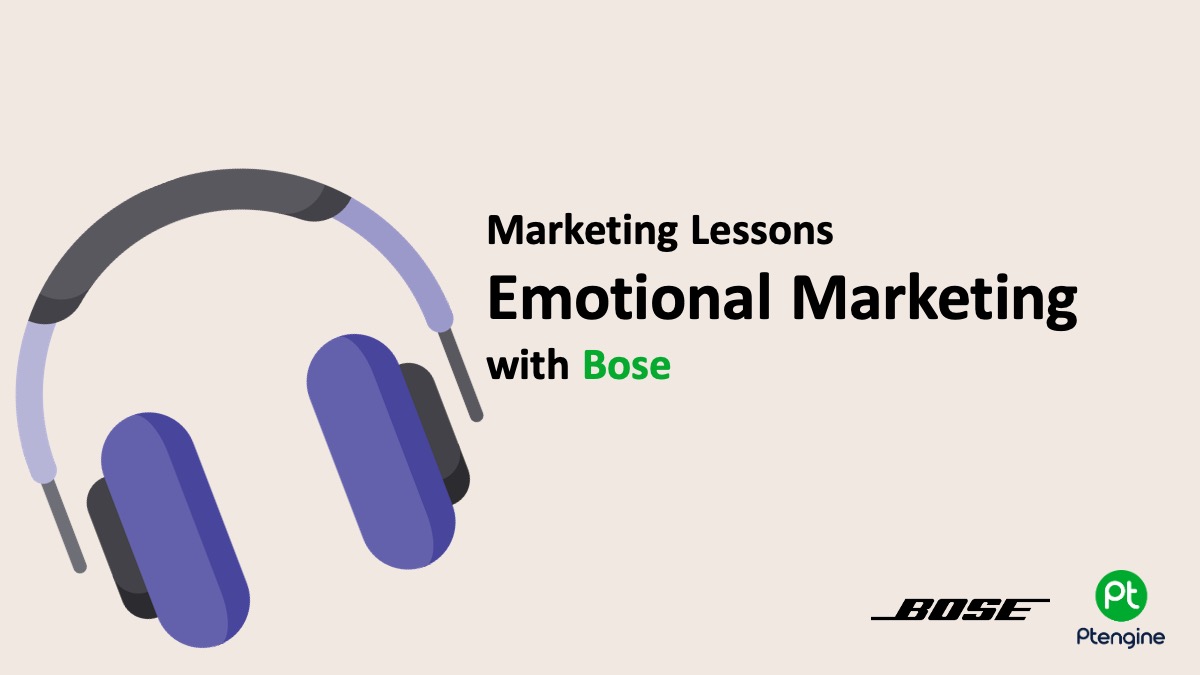
Bose Marketing: 7 Emotional Marketing Campaigns That Every Marketer Can Learn From
2024/10/08
You can read this article in about 33 minutes
Introduction
Bose is more than just a leader in premium audio technology—it’s a brand that knows how to connect with its audience on an emotional level. Through clever campaigns, Bose taps into how people experience sound, whether it’s through music, relaxation, or focus. Their ability to create emotional connections through marketing has played a huge role in building a loyal customer base.

In this article, we’ll explore seven of Bose’s most impactful emotional marketing campaigns. Each one offers valuable lessons in how to engage audiences, build loyalty, and drive conversions by tapping into the power of storytelling, user experiences, and strategic partnerships. Whether you’re marketing tech, lifestyle products, or services, these insights from Bose can help take your campaigns to the next level.
Let’s dive into how Bose uses emotional marketing to resonate with its audience and create lasting connections.
Campaign 1: “Get Closer” Campaign
Bose’s “Get Closer” campaign is a prime example of effective emotional marketing. The goal was to create an emotional bond between the listener and their music, focusing on how Bose products enhance that experience. Instead of highlighting product specs, the campaign tapped into the emotional impact of sound—whether it’s listening to a favorite song, escaping into a podcast, or getting lost in a movie soundtrack. Bose used emotional marketing to position their products as a gateway to deeper, more meaningful experiences.
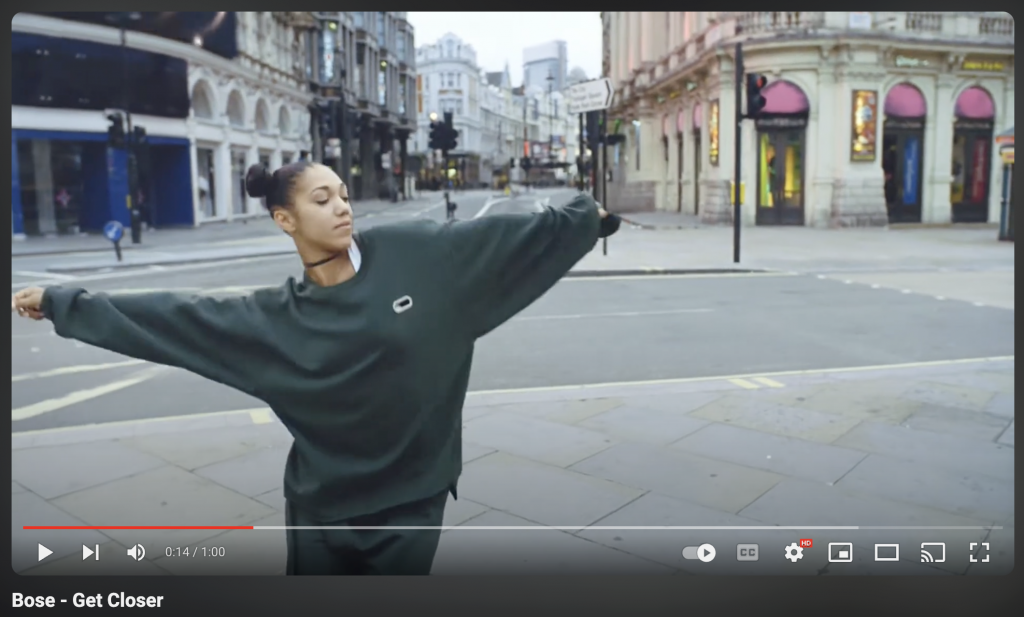
The visuals and messaging showcased people fully absorbed in their audio experience, blocking out distractions and “getting closer” to what matters most to them. The emotional marketing approach made Bose synonymous with not just better sound, but a better emotional experience—whether it’s joy, nostalgia, or relaxation.
What You Can Learn:
- Emphasize Emotional Benefits Over Features: In emotional marketing, it’s more effective to focus on how your product or service improves the user’s life on a personal level. Bose didn’t just lead with technical specs but emphasized the emotional benefits of using their products.
- Connect on a Human Level: The “Get Closer” campaign works because it taps into human experiences like feeling connected or enjoying a private moment. This is key in emotional marketing—show how your product enhances people’s lives emotionally, not just practically.
- Use Visuals to Evoke Emotion: Bose’s ads showed people deeply engaged with their sound experience, creating an emotional response. In emotional marketing, visuals should tell a story and evoke emotions, rather than just showcasing the product.
For e-commerce marketers, the “Get Closer” campaign is a perfect example of how emotional marketing can elevate your brand beyond features and functionality. Focusing on how your product makes people feel can build a deeper connection with your audience and help your brand stand out in a crowded market.
Campaign 2: Bose + NFL Partnership
Bose’s partnership with the NFL is a standout example of emotional marketing through strategic partnerships. As the official sound sponsor of the NFL, Bose positioned its products as essential tools for high-performance athletes, especially during intense moments like games and practices. The goal of this partnership was to connect Bose with high-stakes performance and professionalism, showing that their headphones and speakers are not just for leisure, but also for moments when focus and precision are critical.

Through this partnership, Bose headphones became a familiar sight on NFL sidelines, with coaches and players using them in high-pressure situations. The emotional angle here was about trust and reliability—if professional athletes rely on Bose for focus and performance, everyday consumers can trust Bose for their own moments of concentration, whether at work, the gym, or home.
The campaign extended into commercials, behind-the-scenes content, and social media engagement. By connecting with the NFL, a brand known for its intensity and drama, Bose successfully tapped into the emotions of sports fans—excitement, focus, and the drive to succeed—building a deep emotional connection with their target audience.
What You Can Learn:
- Leverage Emotional Connections Through Strategic Partnerships: Partnering with a high-profile brand or event, like Bose did with the NFL, can boost your brand’s emotional appeal. In this case, Bose used emotional marketing to align their products with focus and performance, making them essential in high-pressure environments.
- Create Aspirational Marketing: By associating their products with elite athletes, Bose made their products aspirational. This is a powerful form of emotional marketing—positioning your product as something trusted by experts can make it more desirable to consumers.
- Use Familiar Visuals to Build Emotional Ties: Bose headphones became part of the iconic NFL sideline experience, connecting emotionally with sports fans who admire the players and coaches. This type of visual association can be incredibly effective in emotional marketing when tied to familiar and respected figures.
For e-commerce marketers, this campaign highlights how emotional marketing can be amplified through the right partnerships. Aligning your brand with trusted, high-performing individuals or organizations can evoke feelings of trust, reliability, and aspiration in your audience.
Campaign 3: #ListenForYourself Campaign
Bose’s #ListenForYourself campaign is a stellar example of how user-generated content (UGC) and social media can be used in emotional marketing to build trust and community. The goal of this campaign was to encourage Bose customers to share their personal experiences with Bose headphones and speakers using the hashtag #ListenForYourself. By inviting real users to tell their stories, Bose turned its customers into brand advocates, creating an authentic emotional connection between the brand and its audience.
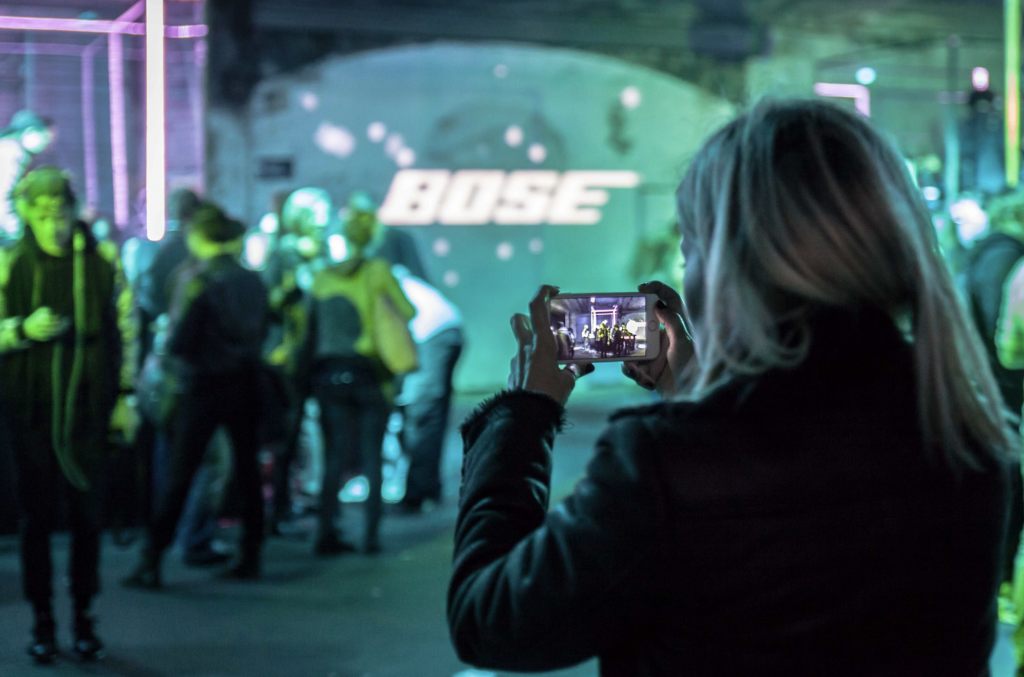
The campaign showcased how people use Bose products in various real-life situations, whether it was for relaxing after a long day, finding focus during a workout, or immersing themselves in a favorite playlist. Bose amplified these user stories across its social media channels, blending professional ads with authentic customer testimonials. The emotional marketing tactic here was clear: Bose wasn’t just telling you how great their products were—they were letting real people do it for them.
By empowering customers to share their own emotional experiences with Bose products, the brand deepened its connection with its audience. Seeing other users highlight how Bose products enhanced their lives made the products feel more relatable and trustworthy.
What You Can Learn:
- Leverage User-Generated Content for Emotional Impact: UGC is a powerful tool in emotional marketing. Bose let real users share their stories, creating an authentic and relatable emotional connection that is far more impactful than traditional advertising alone.
- Create a Community Around Your Brand: Encouraging customers to share their experiences can foster a sense of community. In this campaign, Bose invited customers to connect through shared experiences, adding another emotional layer to their brand.
- Highlight the Emotional Benefits of Your Product: While Bose could have focused on product specs, the #ListenForYourself campaign showcased how Bose products improved daily life in real-world settings. This is a prime example of emotional marketing that emphasizes how a product makes people feel, rather than just what it does.
For e-commerce marketers, the #ListenForYourself campaign shows the power of using your customers’ voices to tell your brand story. By tapping into the authenticity of UGC and focusing on the emotional impact of your product, you can build a strong emotional connection that drives engagement and trust.
Campaign 4: QuietComfort 35 II “Focus. On” Campaign
Bose’s “Focus. On” campaign for their QuietComfort 35 II noise-canceling headphones is a prime example of emotional marketing that zeroes in on how a product can enhance productivity, focus, and personal well-being. Rather than simply promoting the noise-canceling feature as a technical benefit, Bose framed it as a way for users to block out distractions and achieve greater focus, whether at work, while traveling, or during moments of relaxation.

The campaign featured a range of individuals—athletes, musicians, and everyday people—using the QuietComfort 35 II headphones to stay focused in noisy environments. The ads didn’t just highlight the product’s superior noise-canceling capabilities; they emphasized the emotional benefits of being able to concentrate, recharge, and be more productive in an otherwise chaotic world. This approach created an emotional connection between the product and the desire for peace, focus, and control over one’s environment.

By tapping into the stress and distractions people experience in their daily lives, Bose used emotional marketing to present the QuietComfort 35 II headphones as a solution that provides more than just technical performance—it provides emotional relief and control over one’s environment.
What You Can Learn:
- Focus on the Emotional Outcome, Not Just Features: Instead of promoting noise cancellation as a feature, Bose tied it to the emotional outcome: enhanced focus and productivity. In emotional marketing, it’s key to show how your product solves deeper, emotional needs—whether that’s reducing stress or helping people feel more in control.
- Target Everyday Problems: The “Focus. On” campaign connected with consumers by addressing a common challenge—distractions in noisy environments. Effective emotional marketing highlights how your product can make a meaningful difference in solving everyday frustrations.
- Show Your Product in Real-Life Situations: Bose made their product relatable by showcasing it being used in real-world scenarios that many people can identify with. Whether it’s in an office, on a flight, or at home, showing real-life use cases makes your emotional marketing more tangible and effective.
The “Focus. On” campaign is a great reminder for e-commerce marketers to connect their product features with real, emotional outcomes. By addressing common challenges and positioning your product as a solution that enhances the customer’s emotional well-being, you can create deeper connections and drive loyalty through emotional marketing.
Campaign 5: Bose and Formula 1 Partnership
Bose’s partnership with the Mercedes-AMG Petronas Formula 1 team is another brilliant example of how emotional marketing can be achieved through strategic partnerships. In this campaign, Bose aligned itself with the precision, performance, and high-stakes world of Formula 1 racing, positioning its products as essential tools for elite athletes and professionals who demand the highest level of focus and excellence.

Through this partnership, Bose products, especially their noise-canceling headphones, were prominently featured in the high-pressure environment of Formula 1. The campaign showcased drivers and team members using Bose gear during race preparations, team meetings, and moments of mental focus before hitting the track. This connection between the brand and Formula 1 reinforced the idea that Bose products help individuals perform at their best, even in the most intense, high-stakes situations.
The emotional appeal of this campaign lay in associating Bose with success, performance, and focus. By linking their brand to the prestige of Formula 1, Bose appealed to consumers who value high performance in their own lives—whether at work, in sports, or in personal pursuits.
What You Can Learn:
- Align Your Brand with Excellence: Bose’s Formula 1 partnership shows how aligning your brand with high-performance industries or individuals can elevate your product’s appeal. This form of emotional marketing allows customers to associate your product with success, precision, and elite performance.
- Use Visual Storytelling to Highlight Performance: The campaign featured drivers and team members using Bose products during critical moments, visually reinforcing the idea that Bose headphones support focus in high-pressure situations. This type of storytelling connects the product with performance in a relatable way.
- Appeal to Aspirations: The emotional appeal of this campaign taps into the desire for excellence and focus. When consumers see elite professionals relying on Bose, they’re inspired to feel that using Bose products could help them perform at their best too. This aspirational angle is a key strategy in emotional marketing.
For e-commerce marketers, the Formula 1 partnership highlights how strategic collaborations can amplify emotional marketing efforts. By aligning your brand with excellence and performance, you can create a strong emotional connection with your audience, helping them see your product as essential for achieving their own personal or professional goals.
Campaign 6: “Better Sound Through Research” Tagline Campaign
Bose’s long-running “Better Sound Through Research” campaign is a classic example of how a tagline can encapsulate an entire brand’s identity while leveraging emotional marketing to build trust and credibility. This campaign emphasized the extensive research and innovation behind every Bose product, positioning the brand as one deeply committed to delivering superior sound quality through scientific expertise and continuous improvement.
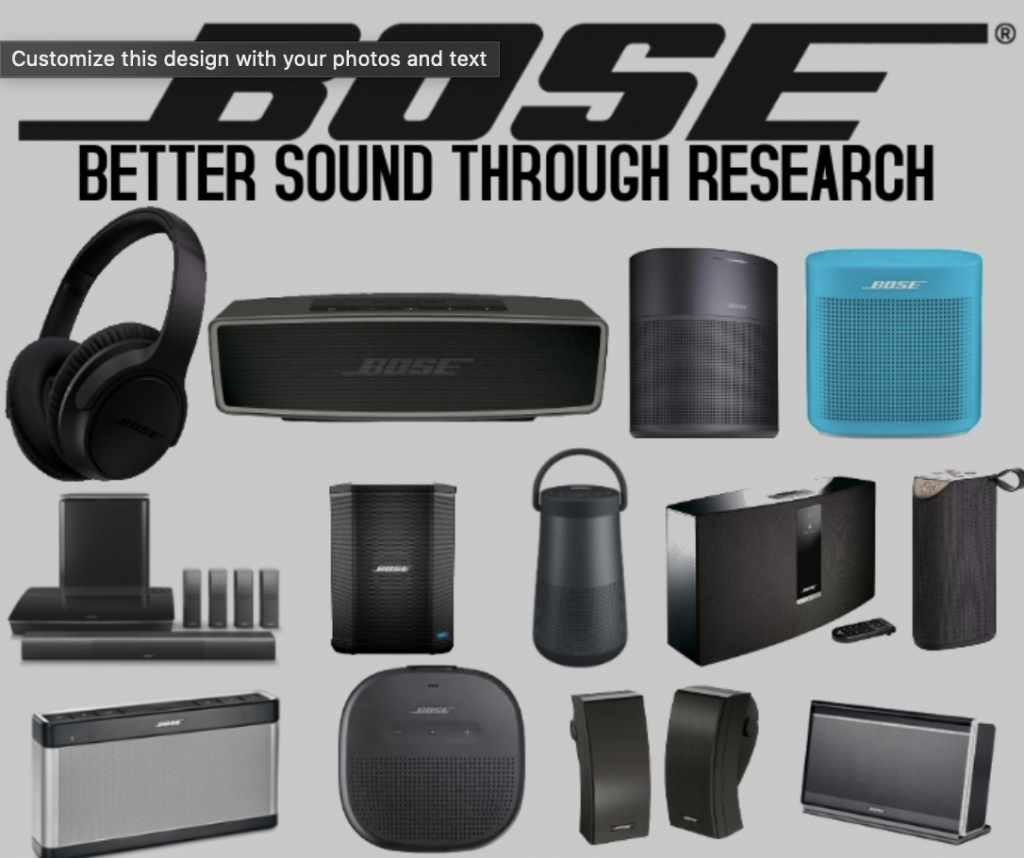
The emotional hook of this campaign lies in the promise of quality and reliability. Bose wasn’t just selling speakers or headphones—they were selling peace of mind. The tagline “Better Sound Through Research” communicated to customers that every product had been rigorously developed, tested, and refined, providing a level of trust and assurance that their investment in Bose would be worth it. The focus on research also appealed to tech-savvy consumers who value brands that are pushing the boundaries of innovation.
By repeatedly reinforcing this message, Bose turned their dedication to research into a core part of their identity, connecting emotionally with customers who wanted not just great sound, but sound they could rely on for years to come.
What You Can Learn:
- Build Trust Through Your Brand’s Commitment: Bose used this campaign to communicate a deep commitment to research and quality, which established an emotional connection with customers based on trust. In emotional marketing, reassuring customers of your brand’s commitment to quality and excellence can foster long-term loyalty.
- Consistency in Messaging: The “Better Sound Through Research” tagline became synonymous with Bose, consistently reminding customers that they’re investing in a product backed by years of scientific research. Sticking with a powerful message over time can reinforce brand identity and deepen emotional connections.
- Emphasize the ‘Why’ Behind Your Products: By focusing on the research and development that goes into their products, Bose gave customers a compelling reason to believe in the brand. When you share the “why” behind your product—whether it’s research, innovation, or craftsmanship—it can create a deeper emotional connection.
For e-commerce marketers, the “Better Sound Through Research” campaign is a reminder that a strong, consistent message can enhance emotional marketing by building credibility and trust. By showcasing the work and dedication that goes into creating your product, you can tap into emotions like trust, reliability, and assurance, helping your brand stand out in a competitive market.
Campaign 7: Bose Pop-Up Stores and Experiential Marketing
Bose’s investment in pop-up stores and experiential marketing is a powerful example of how a brand can use immersive experiences to create emotional connections with customers. The goal of these pop-up events and experiential stores was to allow potential customers to fully experience the superior sound quality of Bose products firsthand. Bose understood that no amount of advertising could replicate the emotional impact of hearing and feeling the product in person.
These pop-up stores were set up in high-traffic areas like airports, shopping malls, and events, giving passersby the chance to interact with Bose’s high-end speakers and headphones. The brand created tailored environments where people could step inside, block out the noise of the outside world, and immerse themselves in the rich sound that Bose is known for. By creating these intimate and controlled settings, Bose evoked emotions of calm, focus, and indulgence—feelings that are core to their brand identity.
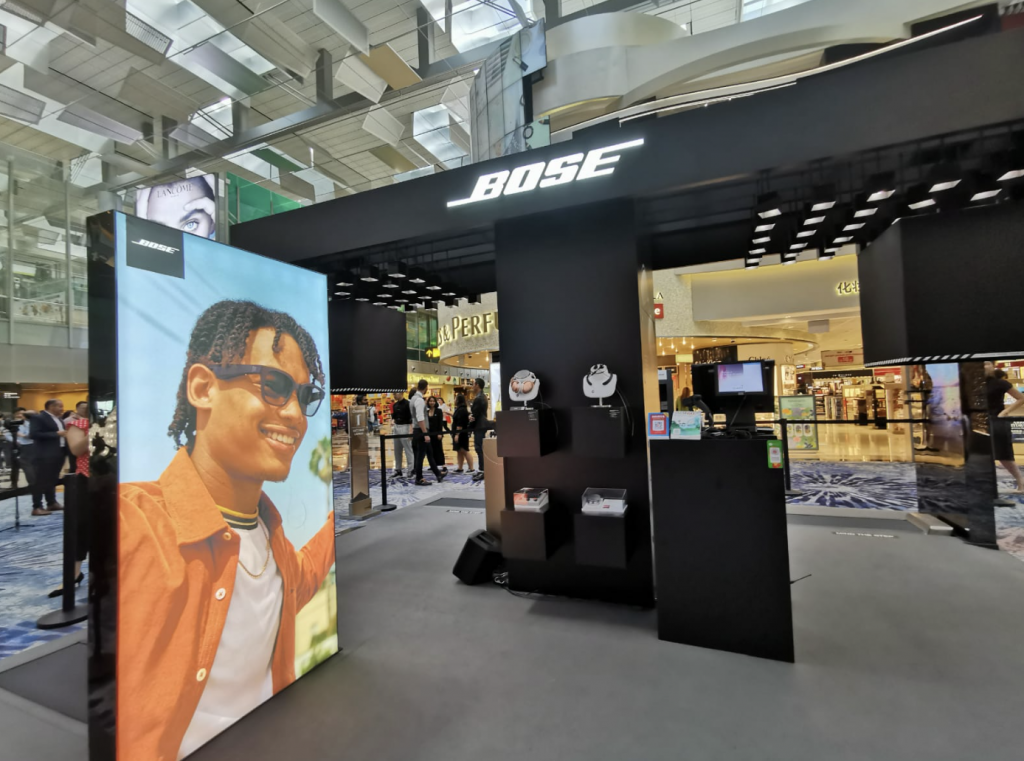
The emotional marketing strategy here was rooted in sensory experience. By letting potential buyers experience the product in a tangible way, Bose was able to create an emotional connection between the customer and the product before the purchase was even made.
What You Can Learn:
- Engage Customers Through Experiences: Allowing customers to physically engage with your product creates a much stronger emotional connection than traditional advertising. Bose’s pop-up stores immersed customers in a real-world experience, tapping into emotions like excitement and satisfaction. In emotional marketing, creating hands-on experiences can enhance the bond between your brand and its audience.
- Use Sensory Appeal: Bose focused on sound as the key emotional trigger in these pop-ups, letting customers feel the difference their products make. Think about how you can engage your customers’ senses—whether through sound, touch, or visuals—to create an emotional connection.
- Go Where Your Customers Are: Bose strategically placed these pop-up stores in high-traffic locations to meet their customers where they were. For e-commerce marketers, consider how you can create experiences—virtual or physical—that make it easy for your customers to connect with your product.
For e-commerce marketers, Bose’s use of experiential marketing through pop-up stores is a great example of how creating immersive, sensory experiences can drive emotional connections. Offering a hands-on experience—whether in-store or through virtual demos—can help customers feel more connected to your product and brand, enhancing loyalty and driving conversions through emotional marketing.
Conclusion: Key Takeaways from Bose’s Emotional Marketing Success
Bose has consistently demonstrated the power of emotional marketing by creating campaigns that resonate with consumers on a deeper level. From their partnerships with the NFL and Formula 1 to user-generated content and experiential pop-up stores, Bose has successfully connected with their audience through emotion-driven storytelling, strategic partnerships, and immersive experiences.
Here are the key takeaways for e-commerce marketers looking to learn from Bose’s approach:
- Emphasize Emotional Benefits: Campaigns like “Get Closer” and “Focus. On” show that highlighting how your product improves customers’ lives emotionally—whether through focus, relaxation, or joy—can be more impactful than just listing features.
- Leverage Strategic Partnerships: Collaborating with high-profile partners like the NFL and Formula 1 allowed Bose to position their products as essential for performance and focus, elevating their brand.
- Encourage User-Generated Content: The #ListenForYourself campaign tapped into the power of customer stories, creating authentic emotional connections through shared experiences.
- Create Immersive Experiences: Whether through pop-up stores or experiential events, Bose showed that letting customers physically engage with your product can create a lasting emotional bond.
- Maintain Consistent Messaging: Bose’s “Better Sound Through Research” campaign is a reminder of the importance of consistency. Reinforcing your brand’s core values over time helps build trust and loyalty.
By focusing on emotional connections, Bose has built a brand that resonates deeply with its audience, creating lasting loyalty. For e-commerce marketers, the lesson is clear: tapping into emotions, whether through storytelling, experiences, or strategic partnerships, can elevate your brand and create stronger, more meaningful customer relationships.